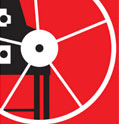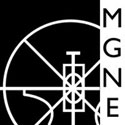California Society of Printmakers Glossary
 The California Society of Printmakers (CSP) is a nonprofit arts organization which promotes the practice and appreciation of fine art contemporary printmaking. Our mission is to support both the integrity of traditional printmaking and provide a home for artists exploring new directions in contemporary print methods. Please see our compressive Glossary. The CSP provides support for its members and serves the greater community.
The California Society of Printmakers (CSP) is a nonprofit arts organization which promotes the practice and appreciation of fine art contemporary printmaking. Our mission is to support both the integrity of traditional printmaking and provide a home for artists exploring new directions in contemporary print methods. Please see our compressive Glossary. The CSP provides support for its members and serves the greater community.
This glossary is from the California Society of Printmakers’ Centennial Book.
À la Poupée
French: with the doll
An intaglio method in which cotton dabbers or felt pads are used to hand-apply several different colors to a single plate. The technique allows the artist to use multiple colors with one run of the plate through the press. Also known as the oneplate method.
Acrylic Monotype
An image painted on a plate with acrylic paint and a gel medium base, or formulated to be slow drying, then transferred to paper with (often hand) pressure. See also Monotype.
Aquapasto
With watercolor and gouache or water-soluble crayon for a monotype.
Aquatint
An intaglio process in which rosin powder is evenly sifted over and etched into a copper plate using a stop-out varnish in various places to protect the plate during successive acid baths. The technique creates an even tooth (texture) on the surface of the plate that catches the ink, allowing the artist to produce a controlled range of tonal areas in the image from dark to light. Often combined with other intaglio methods such as etching and drypoint.
Aquatint Etching
An image created exclusively by the aquatint technique. See previous entry.
Archival Pigment Print
See Digital Print.
Artist’s ProofA/P
See Proof.
Baren/Japanese Baren
A round, hand-held pad used to burnish or apply pressure to the back of relief prints. Traditionally made with an ategawa (circular stiff backing piece), a shin (coiled pad of twisted fiber), and a barengawa (cover) made from a takenokawa (bamboo sheath) that is tightly twisted and tied around the back. Modern barens can be made with plastics, ball bearings, and other materials.
Bleed Print
A printed image that extends to the edges of the sheet. To achieve a bleed print, the printer must print a larger image than the paper, after which the printed deckle is preserved or the paper is cut to size.
Blind Embossment
See Embossment.
Block, Block Print
See Relief Print.
Bon à Tirer
French: good to print
The print a master printer uses as an exemplar for printing an edition. Also known as BAT.
Burin
An engraving tool with different-shaped tips, used for both wood and metal plates. Also known as a graver.
Caran d’Ache
A commercial brand of water-soluble pencils, crayons, pastels, and other drawing tools.
Chiaroscuro Woodcut
Italian: light-dark
A multi-block technique used to achieve gradual shifts in tone from light to dark; traditionally, a black key block that describes the complete image using thin black lines is printed over the tonal block(s). The technique originated in Germany around 1500. Italian chiaroscuro prints from that period used only tonal blocks, allowing the fi nished piece to resemble a wash drawing. In the modern era, the look of a chiaroscuro woodcut can be achieved with a reductive technique using one block. See also Reduction Print.
Chine Collé
French: glued lightweight Asian paper
An image printed on thin pieces of (often colored) delicate paper designed to embellish part of a larger print, or which underlies an entire print. The dampened tissue is placed on the inked plate, lightly treated with paste on its back, and adhered to the heavier sheet with one pass through the press.
Chromoxylography
A late 19th and early 20th century color printing technique using wood engraving and woodcut plates. The process, often used for color book illustration, employs separate blocks for printing primary colors that are layered or combined to create other colors. The blocks are often intricately carved to resemble hatching. When printed on top of each other, the hatched areas suggest a wide range of tints and colors. See also Wood engraving, Xylography.
Clay Monotype
A monotype technique made with a leather-hard, flat, clay plate and painted with kaolin (white clay) into which some form of pure pigment has been added. The print is made by placing dampened paper or another support on the clay, then rolling the back of the paper/support with a brayer or roller. Pigment from the clay substrate is lifted and embedded into the surface of the paper, resulting in a unique archival print. See also Monotype.
CNC
A Computer Numeric Control device used in manufacturing and printmaking in which a digital fi le is sent to a computercontrolled cutting device such as a CNC router, laser cutter, or water jet used for the production of matrices for lithography, intaglio, and relief printmaking, or other non-art-related items. The list of CNC devices is growing, as contemporary printmakers use embroidery machines, engraving machines, pencil plotters, vinyl cutters, and cutting plotters (among others) to create matrices and prints. See also Laser-Cut Woodcut.
Collagraph
A blending of “collage” and “graphic” to describe a print made from a plate with low-relief collage elements glued to its surface. Any thin, sturdy material such as cardboard, metal, linoleum, or plastic can serve as the plate; materials such as paper, cloth, or other found textures are adhered to it or may be built up on it with glues or acrylic medium. The plate can be inked and printed with intaglio or relief methods. Sometimes spelled collograph. See also Photocollagraphy.



